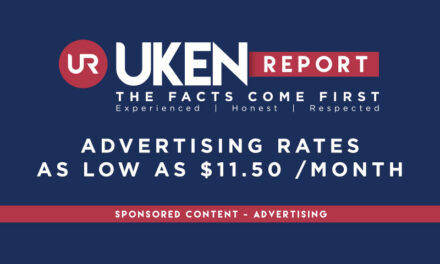Some 342,000 new consumers signed up for health insurance through Covered California, the state’s health insurance marketplace, through Sunday, Jan. 21.
Covered California announced the new enrollment figures Monday as it approaches the final weeks of the annual open-enrollment period, and sought to quell consumer confusion by clarifying the federal penalty rules in place for 2018.
The pace of new enrollees for the current open-enrollment period remains ahead of last year, when sign-ups did not surpass 320,000 until Jan. 23, 2017. In addition to the new sign-ups, more than 1.2 million existing Covered California members have renewed their coverage for 2018.
The vast majority will reportedly see a decrease in their net monthly premium payment after receiving more financial assistance.
“The demand — as well as the need — for health insurance is as strong today as it was when we first began offering coverage five years ago,” said Peter V. Lee, executive director of Covered California, in a prepared statement. “The people of California are taking advantage of the quality plans and lower costs available through Covered California in 2018.”
The Affordable Care Act’s individual shared responsibility payment, often called the individual mandate, remains in place throughout calendar year 2018. Consumers who do not have health insurance could face stiff tax penalties if they are not covered. These penalties are a minimum of $695 per adult and $347.50 per child, up to $2,085 per family, or at least 2.5 percent of annual household income — whichever is greater (for an estimated maximum penalty of $3,816 per individual and $19,080 for a family of five). The recent tax bill removes the penalty but it does not go into effect until 2019.
The Internal Revenue Service website currently states “taxpayers remain obligated to follow the law and pay what they may owe at the point of filing.”
In addition, the IRS had previously indicated it would not implement a policy proposed by the prior administration to reject tax returns where the consumer did not indicate whether they had coverage during the tax year. This announcement led to confusion in 2017 about the IRS’ intention to enforce the federal penalty. In October 2017 however, the agency announced that in order “to avoid refund and processing delays when filing their 2017 returns in 2018,” consumers should indicate “whether they and everyone on their return had coverage, qualified for an exemption from the coverage requirement or are making an individual shared responsibility payment.” Click here to see the IRS announcement.
“The real penalty for not having health insurance is getting sick or injured and facing medical bills that are in the tens or even hundreds of thousands of dollars,” Lee said. “Health insurance provides security and peace of mind, and this year we are seeing that coverage is more affordable than many people think.”
A recent study by the Kaiser Family Foundation found estimated that 70 percent of consumers who are eligible for financial help and uninsured could purchase health insurance coverage for less than the price of the tax penalty. To see the complete study, click here.
Open enrollment, which continues through Jan. 31, is the one time each year — if your life circumstances have not changed — that health insurance companies must take everyone who wishes to sign up.
A recent Covered California analysis found that the net monthly premiums for enrollees who receive financial help are on average 10 percent lower than what new and renewing consumers paid last year. The lower prices are a result of more financial help being available for consumers who qualify for assistance. The Affordable Care Act is designed to protect consumers by providing more premium tax credits when premiums rise. And for the many Californians in the individual market who do not get financial help, the robust competition has meant that for many, premium increases have been kept in the single digits.
Since 2014, more than 3 million people have purchased health insurance through Covered California, and nearly 4 million have enrolled in the state’s Medi-Cal program. Together, the gains have cut the rate of the uninsured in California from 17 percent in 2013 to a historic low of 6.8 percent as of June 2017.
Consumers interested in learning more about their coverage options should go here where they can get help to enroll. They can explore their options and find out if they qualify for financial help by using the Shop and Compare Tool. They can also get free and confidential enrollment assistance by visiting here and searching among 800 storefronts statewide, or more than 17,000 certified enrollers who can assist consumers in understanding their choices and enrolling, including individuals who can assist in other languages. In addition, consumers can reach the Covered California service center by calling (800) 300-1506.







